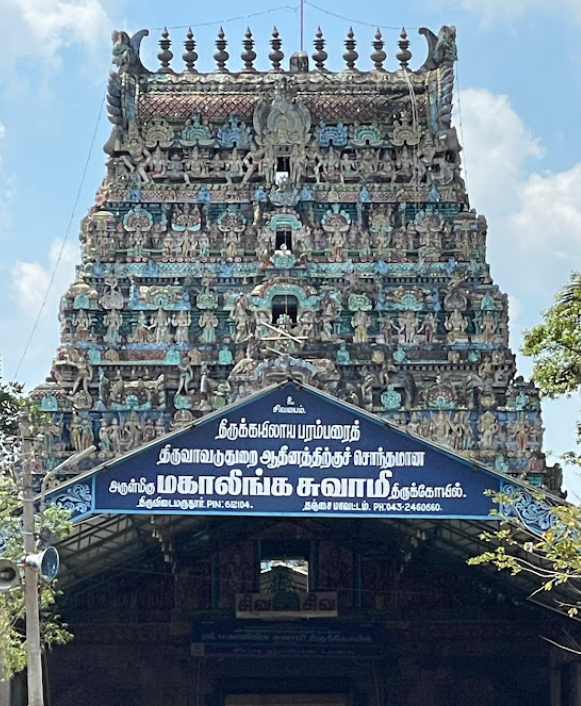Sage Agasthya, along with other sages, came to Itaimaruthur and engaged in tapasya, meditating on Goddess Umadevi. In response to their devotion, Goddess Uma appeared before the sages. They requested to see Lord Shiva as well. To fulfil their wish, Umadevi entered into Shiva tapasya. The Lord then granted her wish and appeared before her and the sages, worshipping the 'Jothi Lingam.'
Surprised, Umadevi asked the Lord, “O Lord! It is customary for Brahman and other deities to worship you. Why do you worship your own self?” The Lord replied, “Uma Devi! We are the Ultimate, both the worshippers and the worshipped. Because these sages have forgotten to worship us, we are worshipping ourselves.” Since that day, the sages began to worship according to the 'Kaamika Law,' reaping significant spiritual benefits.
Administration History :
The Mahalingeswarar Temple in Thiruvidaimarudur has a rich history of administration, starting from the Chola period, with notable extensions during the Vijayanagara era. Various inscriptions from rulers like Rajaraja Chola I, Kulothunga Chola III, and Vijayanagara kings record endowments, land donations, and maintenance of temple rituals. The Maratha rulers, particularly Pratap Singh, were also significant patrons of the temple. In more recent times, the Dharmapuram Adheenam oversees the administration and management of temple activities, including charity endowments such as "Pichai Kattalai."
